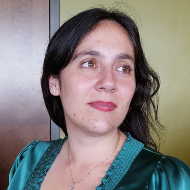I’m sure everybody reading this is as excited as I am for another dose of scientific literacy data. You may remember our last data update, where we revealed the exciting news of significant improvement in scientific literacy in Cedar Rapids over a six month time period. Now we’ve collected data for a year and can show you some cool numbers not only from Cedar Rapids, but now also from Iowa City.
Check out this graph, then I’ll tell you more about the populations, and what I think this info means.
The graph represents some huge measurable increases in scientific literacy. In Cedar Rapids, where the NCSE Science Booster Club has been active and actively gathering data for over a year, the community scientific literacy score has risen from 12.6/24 to 16.7/24, an astonishing 25% increase. I’ve never seen numbers like that! And in Iowa City, average scores have risen from 16.8/24 to 18.1/24; that’s 8% over a year of study.
You’ll notice that the communities had very different starting scores. That’s not surprising, because although they’re only about half an hour away from each other, they are in many ways quite different.
Iowa City is a Big Ten university town with a nationally recognized teaching hospital, and major employers including ACT and Pearson, both education companies. Iowa City regularly is high on those “best places to live” lists—we were number 3 in 2015! As you might expect from a university town with a robust biking culture, people in Iowa City tend to be highly educated liberals. I live there and I can assure you that it rocks in a pretty solid fashion (and I’m aware I’m biased).
Nevertheless, Cedar Rapids outdoes Iowa City in some metrics. Your average family in Cedar Rapids makes more money—about $63.3k vs $57.5k, which is the sort of difference most families would feel. There are a lot of good jobs in Cedar Rapids, from engineering work with Rockwell Collins to very high-paying jobs in the grain processing industry, as well as lots of factory work. And it doesn’t lack in cultural diversity. Cedar Rapids is an important site for Muslim history in the US, with Muslims in the area since 1895, the first Muslim cemetery in North America, and the longest-standing mosque in North America.
So both areas have fairly strong economies, both are fairly diverse and welcoming. Iowa City is a bit more liberal-leaning, and on average a little more educated, Cedar Rapids more industrial, in some ways a more statistically normal American city than Iowa City. The people of Cedar Rapids, for example, answered a lot of the questions on our scientific literacy survey more like an average American. About 30% think the sun revolves around the Earth, whereas the percentage of people in Iowa City who hold this misconception consistently falls below 10%. But the people of Iowa City are more likely to display misconceptions associated with liberals, with more than 70% of them fearing GMO foods.
The big change in answers on this test, item by item, were related to climate change and evolution—the areas in which NCSE provides programming. Item by item, a big difference between Cedar Rapids and Iowa City initially was literacy about basic climate science. But you can see that average scores in Cedar Rapids have been making big jumps. A lot of those jumps are related to rapid improvement on basic climate science items.
While these populations had very different levels of scientific literacy at our initial sampling points, they’re no longer different from a perspective of statistical significance. I think that’s very interesting and very cool.
What this data tells me is actually pretty simple.
People don’t know about basic climate science. They don’t have access to basic climate science. And when they get access to basic climate science, they want to learn about it. What’s more, they can learn about it, and they can show on assessments that they did learn about it.
I’m still collecting data with my team. We should get another big pile of data in April around Earth Day, where we’ll be seeing thousands and thousands of people at many scheduled events. I’m interested to see if scientific literacy levels reach a stable point in our communities. I’m thinking that they will, and that we’ll be able to bring most communities up from whatever their baseline is to that new set point.
As we expand within Iowa, we should also be getting a baseline for Des Moines and the agricultural region of northwest Iowa in the month of April. I anticipate seeing very different baseline scores in these two populations. It’ll be interesting to see how they compare to each other and to our current study populations.
There are lots of questions yet to answer. Do communities manage to sustain improvement? Do they forget or retain what they’ve learned, and what's the timeline for those processes? Is there a baseline from which a community can’t pull up, or can everyone improve? I’d bet on the second.
More data coming soon and with it, more sweet, sweet, evidence-based answers to these questions.

